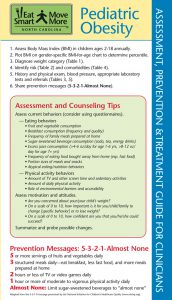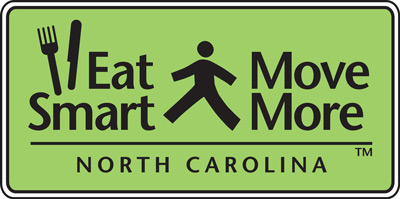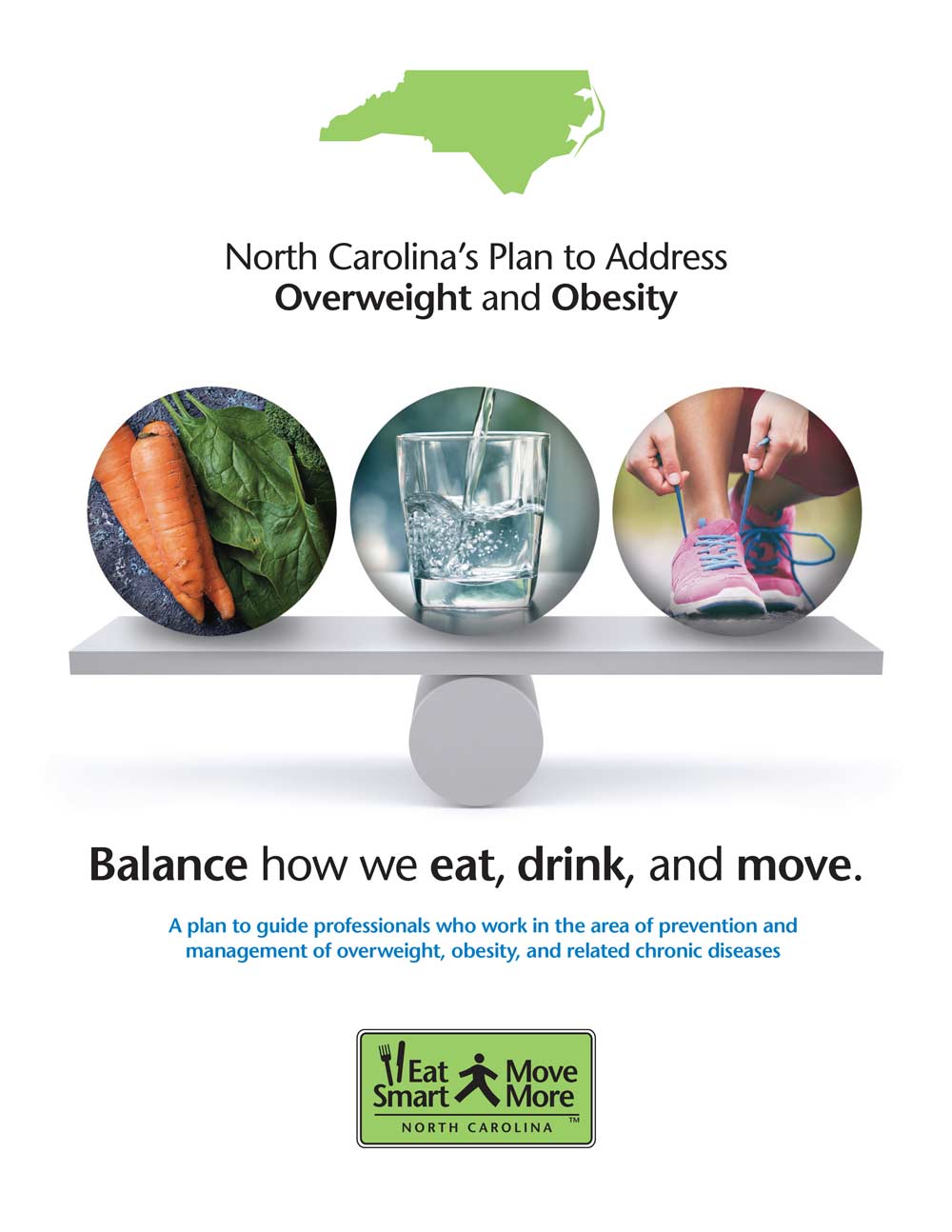Who Is It For?
Physicians, physician assistants, nurse practitioners, nurses and other interested health care professionals.
How Do You Get It?
These resources can be downloaded at no charge from this page and printed for clinician use.
How Is It Used?
Clinicians use these tools to prevent, assess and treat childhood overweight and obesity.Pediatric Obesity Clinician Reference Guide
- Clinician Reference Guide
- Clinician Reference Guide (Professional Print Version)
- This reference guide is based on the AMA Expert Committee Recommendations. A committee of North Carolina physicians led the development of this tool, with input from a larger group of contributors and reviewers. For the full list of designers, contributors and reviewers, click here. The guide includes references to appropriate journal articles and resources. It is intended to be printed, front and back, on 8.5 x 14″ paper and tri-folded.
Algorithm for the Assessment and Management of Childhood Obesity in Patients 2 Years and Older
This algorithm is based on the 2007 Expert Committee Recommendations, new evidence and promising practices.
This algorithm was developed by the American Academy of Pediatrics Institute for Healthy Childhood Weight (Institute). The Institute serves as a translational engine, moving policy and research from theory into practice in healthcare, communities, and homes.
New guidelines are due for release in early 2021.
Color-Coded BMI Charts
- BMI Chart for Boys
- BMI Chart for Girls
- These color-coded versions of the 2000 CDC BMI charts also provide the 99th percentile BMI cut-points for childhood obesity.
Blood Pressure Tables
- Blood Pressure Table for Boys
- Blood Pressure Table for Boys, black and white
- Blood Pressure Table for Girls
- Blood Pressure Table for Girls, black and white
- These tables provide gender-specific blood pressure levels by age and height percentile. They are available in color and black/white.
Prescription Pads Promoting “5-3-2-1-Almost None” Prevention Messages
- 5 or more servings of fruits and vegetables daily
- 3 structured meals daily – eat breakfast, less fast food, and more meals prepared at home
- 2 hours or less of TV or video games daily
- 1 hour or more of moderate to vigorous physical activity daily
- Limit sugar-sweetened drinks to “almost none”
- Prescription Pad
- Prescription Pad (Spanish)
- Prescription Pad, black and white
- Prescription Pad, black and white (Spanish)
- Non-customizable prescription pads are available in color and black/white.
- Customizable Prescription Pad
- Customizable Prescription Pad (Spanish)
- Customizable Prescription Pad, black and white
- Customizable Prescription Pad, black and white (Spanish)
- Customizable prescription pads are available in color and black/white.



